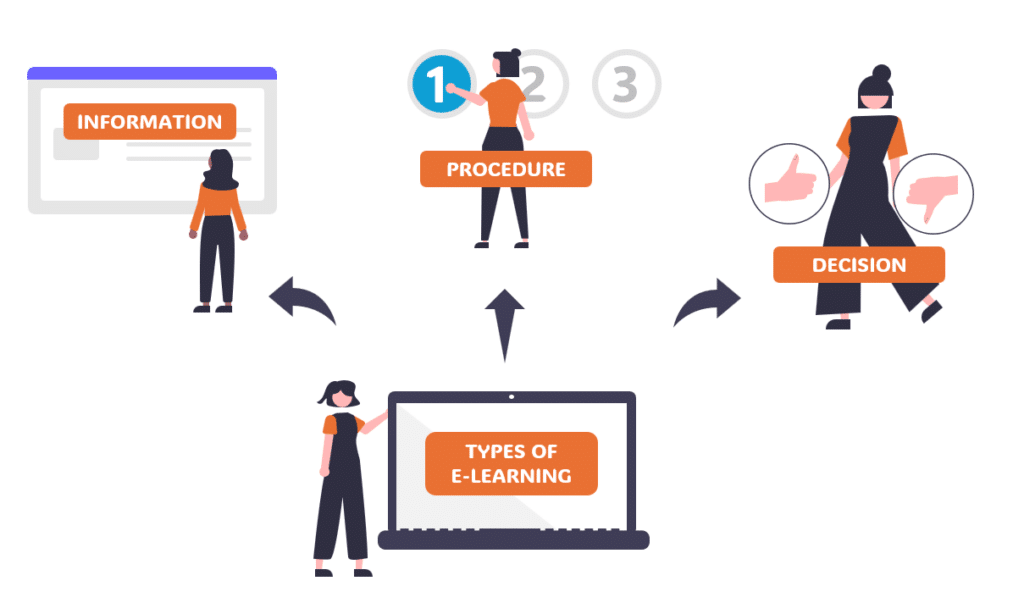Are You Building the Right Type of E-Learning Course?
Discover how to avoid wasting time and money on overly complex e-learning courses. Focus on developing the best possible course with your limited resources.

Maximizing resources: how to build effective e-learning courses
Creating an e-learning course can be resource-intensive, but it doesn’t have to be overly complex. By focusing on the course’s purpose and understanding different course types, you can make the most of your limited time and budget. This guide will walk you through the steps to build an effective e-learning course that meets your objectives without unnecessary complications.
Step 1: Identify the course’s purpose
Most e-learning courses aim to change performance. However, many courses focus on sharing information rather than improving performance. This occurs because creators often prioritize content delivery over performance enhancement.
First, help your client focus on real performance goals and guide them to the right intervention. Sometimes, this means they don’t need an e-learning course, saving time and money.
If an e-learning course is still necessary, determine the type of course needed. Identifying the course type helps you allocate resources more effectively.
Step 2: Understand the type of course

E-learning courses typically focus on sharing information or changing performance. Within this framework, three main types of e-learning courses exist:
- Communicate information with no performance expectations. These courses share new information without expecting changed performance. For example, a course highlighting new software features informs users without requiring action.
- Give step-by-step instructions with specific outcomes. These courses focus on procedures and teach repeatable tasks closely mirroring workplace activities. An example includes showing how to complete a worksheet or use software.
- Share guidelines to help learners solve problems. These challenging courses teach principles or guidelines rather than repeatable steps. They require understanding the nuances of learners’ situations and how to apply principles in unique contexts.
Step 3: Build an e-learning course
All three types of courses have their appropriate place. It’s your job to determine the appropriate type to meet the course objectives. If you just need to share information, don’t waste resources building complex scenarios. And if you need to change behaviors, don’t miss the opportunity to present decision-making scenarios over a click-and-read information dump.
Final thoughts
Building an effective e-learning course requires a clear understanding of its purpose and type. By identifying the purpose of your course you can allocate your resources more efficiently. Remember to focus on high-impact projects and avoid wasting time and money on unnecessary complexity. This ensures that your e-learning course delivers the best possible results within your resource constraints.
You may also like

Translation vs. Localization: What’s the Difference?
Compare the difference between translation vs. localization and find out how to choose the best approach for your global workforce training needs.

